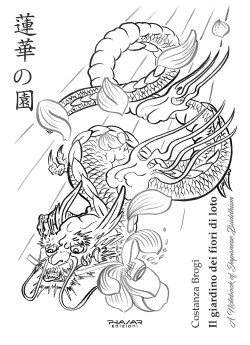Book On Demand: Pubblicare il tuo libro su Phasar Edizioni

Costanza Brogi
La scrittura perfezionata. A manual of Siddham
Il Siddhaṃ è la bellissima forma di scrittura che ancora oggi viene usata nelle scuole del buddhismo esoterico. I suoi caratteri sono chiamati, in giapponese, Bonji, i caratteri di Brahmā, nome con il quale tuttavia si intendeva sia il Siddhaṃ sia il Sanscrito, lingua autorevole che deriva da saṃskṛta, ovvero “perfetto”, un linguaggio ben distinto dai prākṛta, le lingue popolari.La leggenda narra che Brahmā abbia inciso le sacre scritture degli Arii, i Veda, nella foglia d’oro e che da questi caratteri siano nati i vari grafemi tra cui il Siddhaṃ, proveniente dal nord dell’India. Negli anni a venire la parola Siddhaṃ divenne prima sinonimo di sillabario per gli studenti, poi venne usata per indicare la scrittura indiana.
Siddhaṃ significa “perfezionato” e con il tempo i buddhisti lo considerarono la scrittura perfetta per la lingua sanscrita. Il Siddhaṃ uscì dai confini dell’India grazie ai missionari, arrivando prima in Cina, dove ha rischiato di scomparire per sempre a seguito della caduta della dinastia Tang e poi in Giappone, dove ha vissuto una nuova rinascita grazie alle scuole esoteriche, che gli attribuiscono enorme importanza. In questo testo sono raccolte le sue caratteristiche, sia storiche sia tecniche, inserite in un ampio contesto storico e culturale che comprende non solo la storia di questa lingua ma anche di quella tipologia di buddhismo che ne accoglie i bellissimi segni.
Siddhaṃ is the beautiful writing that is still used today in the esoteric Buddhist schools. Its characters are called, in Japanese, Bonji, the characters of Brahmā, a name used, however, for both Siddhaṃ and Sanskrit, an authoritative language whose name cames from saṃskṛta, meaning “perfect”, a language quite distinct from prākṛta, the popular languages.
Legend tells that Brahmā engraved the sacred scriptures of the Aryans, the Vedas, in the gold leaf and that various graphemes were born from these characters, including Siddhaṃ, coming from northern India. In the next years, it first became synonymous of a syllabary for students, then the word Siddhaṃ was used to indicate Indian writing. Siddhaṃ means “perfected” and, over time, Buddhists considered it the perfect script for the Sanskrit language.
Siddhaṃ left the borders of India thanks to the missionaries, arriving first in China, where it was disappearing forever, following the fall of the Tang dynasty but in Japan experienced a new rebirth, thanks to the esoteric schools, where an enormous importance is given. In this text, its characteristics, both historical and technical, will be presented, but inserted in a broad historical and cultural context, which includes not only the history of this language but also of that kind of Buddhism that embraced these beautiful signs.
3 volumi non vendibili singolarmente
Edizione ITALIANO - ENGLISH
Prezzo: 200,00
ISBN: 978-88-6358-796-8
PAGINE: 1338
Anno pubblicazione: 2023
Genere: Saggistica







